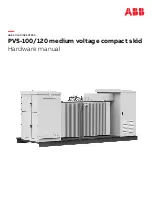
4-24
4.4 SERVICING REFRIGERATION AND FLUID SYSTEMS
Reference Drawing 95S39917
Before starting repairs on either refrigeration system, the serviceman should be familiar with
the location of all components of the stages. Especially important is the identification of the
high and low stages of the refrigeration system. The high stage compressor always connects
directly to the air-cooled condenser. The low stage compressor connects directly to the oil
separator. By following the tubing and referring to the flow diagram, most parts can easily be
traced. By necessity, some parts are foam insulated and rarely require servicing.
4.4.1
Fault Isolation and Diagnosis
In the event of system failure, before attaching gauges or opening either refrigeration circuit,
every effort should be made to ensure that the problem is not electrical in nature. If
compressors are suspected, check the compressor relays, overloads, and capacitors. Check
the temperature control contacts and associated wiring. Use the above procedure on the high
stage first, as it is impossible to run the low stage system unless the high stage is functional
and has had time (10 minutes) to cool the interstage heat exchanger.
Although great care is taken in the design and manufacture, these systems can be subject to
normal failures. Refrigerant leaks, moisture, and component failure can be diagnosed in
much the same way as in other refrigeration equipment. There are some differences,
especially with respect to the low stage.
4.4.1.1
Moisture In Low Stage
This can be diagnosed and repaired as in any medium temperature refrigeration system.
Excess moisture in the low stage results in ice blocking the capillary tube; however, the
replacement of the drier is not possible as it is located within the foam insulation. The
cabinet must be allowed to warm up to room temperature so that sufficient heat will enter the
interstage heat exchanger. Then proceed in this order:
1) Bleed off all refrigerant from the low stage.
2) Evacuate for 8 to 12 hours.
3) Replace vacuum with ultra dry nitrogen to a pressure of 150 psiG.
4) Bleed off pressure.
5) Repeat steps 2-4 three times.
6) Evacuate again as in step 2.
7) Replace refrigerant with specified amount (Section 4.4.2).















































